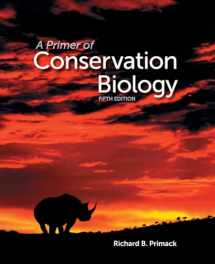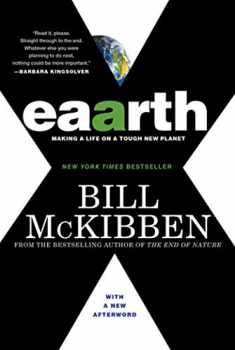
A Primer of Conservation Biology
Book details
Summary
Description
A Primer of Conservation Biology, Fifth Edition, incorporates background, theory, and examples in a lively and readable text that will appeal to a wide audience and stimulate interest in conservation biology. The book provides the most up-to-date perspective on many high-profile issues in the field, such as sustainable development, global warming, payments for ecosystem services, and strategies to save species on the verge of extinction.
The Primer is divided into nine chapters, focusing successively on biological diversity and its value, the threats to biological diversity, conservation at the population and species levels, protecting, managing and restoring ecosystems, and sustainable development. The book provides many examples of successful conservation approaches, such as one involving sea turtles in Brazil, and ends with suggestions for a future agenda. Throughout, the choice of examples is well balanced to show the full range of species, ecosystems, and geographic areas of the world. These examples are also selected to demonstrate the controversies in the field, and stimulate thought and discussion. The links between conservation biology and environmental law, environmental economics, philosophy, social sciences and anthropology, park management, and government policy are clearly presented.
The book is very well illustrated in color. The reader-friendly text is backed by an extensive bibliography (covering literature through 2012) and a glossary. There is an annotated list of suggested readings, a summary, and discussion questions at the end of each chapter. Key conservation organizations and their websites are presented in an Appendix.
A Primer of Conservation Biology is ideally suited for use in short undergraduate courses, either as a stand-alone text or supplemented by outside readings. It can also be used effectively as a supplemental resource in courses in introductory biology, general ecology, population biology, environmental science, and wildlife management. Its broad perspective, concise format, and appealing writing style make the Primer the perfect choice for students, professionals, government policymakers, and others who are eager to learn more about conservation biology. These same qualities give the book a strong appeal to students whose first language is not English.
RESOURCES
For the Instructor
Instructor's Resource Library
This resource includes all figures (line-art illustrations and photographs) and tables from the textbook, provided as both high- and low-resolution JPEGs. All have been formatted and optimized for excellent projection quality. Also included are ready-to-use PowerPoint slides of all figures and tables.


We would LOVE it if you could help us and other readers by reviewing the book
Book review





